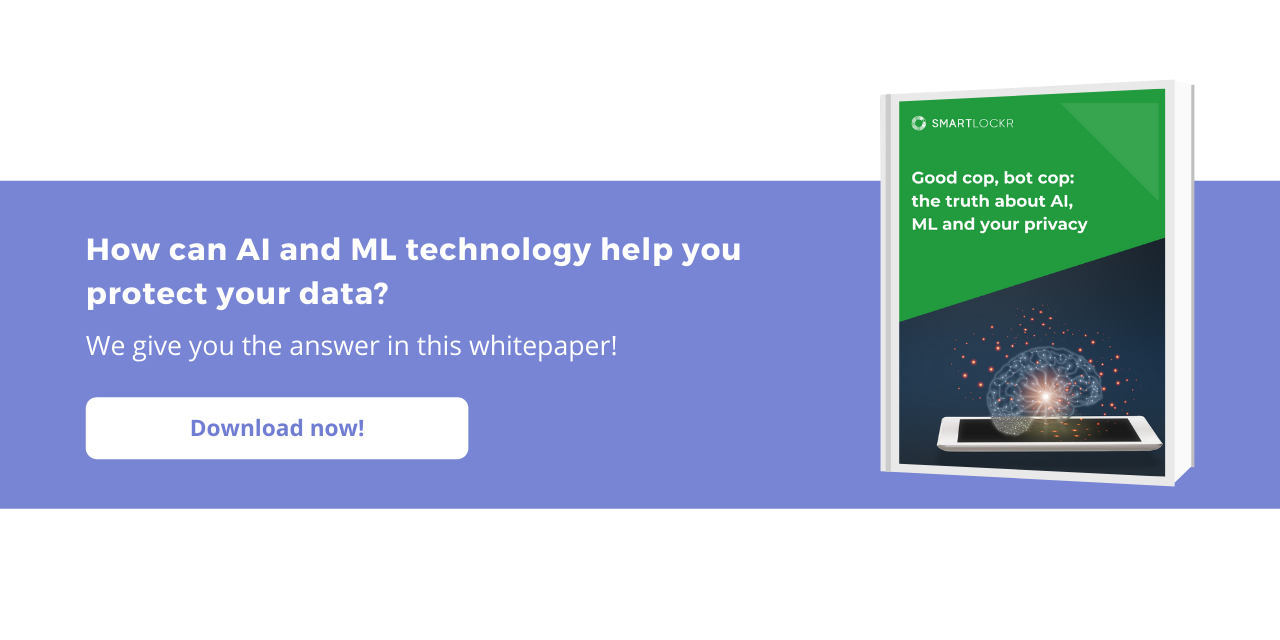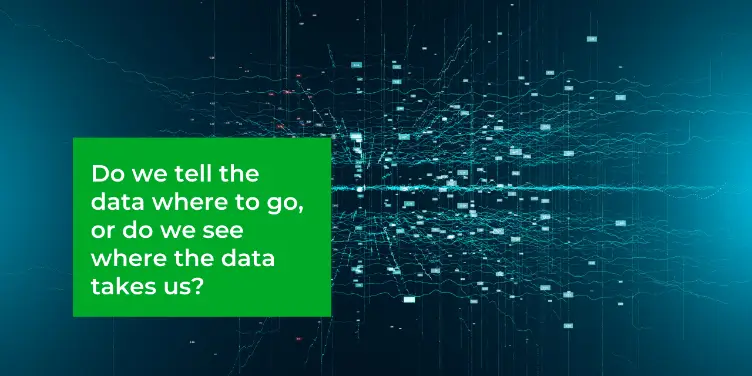Previously on Smartlockr – A.I.: as people from all walks of life continued using dangerously easy passwords the rising machines could solve in seconds, a nigh invisible toggle swooped in and saved the day, leaving us with one burning question: when will we learn from Machine Learning?
If that to you reads more like a trailer for a TV show than a blog for an IT company, congratulations: you instantly sensed something was different, whereas a computer would have needed some thorough Supervised Machine Learning to match your performance.
Well done, but how does any of this relate to protecting your data? And what are Supervised and Unsupervised Machine Learning to begin with?
Everything you need to know about how AI and ML technology can help you protect your data: " Good cop, bot cop: the truth about AI, ML and your privacy"
As you may know, Machine Learning is one of the disciplines that falls under Artificial Intelligence . Broadly speaking, Machine Learning itself can be divided into Supervised Machine Learning and Unsupervised Machine Learning .
Supervised Machine Learning
There are many ways to go from A to B. If you know you start at A and end up at B, the mystery lies in how to get there. Supervised Machine Learning is when the input variable and output variable are both known and you use an algorithm to detect how something goes from A to B .
Both A and B in this case are so called labelled data sets. It’s up to humans to tell a computer what every variable means and how it affects the overall picture. For example, we can use Supervised Machine Learning to predict how long a given flight will be based on weather conditions, traffic or the number of passengers on board. But humans would first have to train the algorithm how these factors affect the outcome.
Unsupervised Machine Learning
If Supervised Machine Learning can be summed up as A >< B , then Unsupervised Machine Learning can be shortened to A >> ? The input variable is labelled, but the output variable is not.
With Supervised Machine Learning the outcome is predetermined. It’s the variables on the way that matter. The goal of Supervised Machine Learning is to get a thorough understanding of anything that can happen on the way from A to B. It’s called Supervised Machine Learning, because we tell the computer what the right answer is (B). We keep giving it new data (A) until it has learned to go from A to B by itself. Because of the so called ‘supervision’, the computer program will always correct itself to end up at B.
With Unsupervised Machine Learning, it’s not so much about finding a way to a predetermined outcome, but seeing where the data takes you. It’s called Unsupervised Machine Learning because there’s no human being telling a computer what the right answer needs to be.
You’ll come across a well known example of Unsupervised Machine Learning pretty much every time you order something online: customers who bought this also bought… is the A >> part of that equation.
Supervised Machine Learning for threat detection
In cyber security, most Machine Learning falls under the Supervised category. The first paragraph of this blog post was written in a different tone of voice than you’d expect from a blog about algorithms. Given enough data, a Supervised Machine Learning algorithm would be able to make a similar distinction. This is why Supervised Machine Learning has proven very effective at recognising spam, phishing emails and even malware. Given enough data, Supervised Machine Learning algorithms will know when an email is an actual email (B) or something else (not B).
Unsupervised Machine Learning for threat detection
As explained above, Unsupervised Machine Learning is more about making sense of the data than about teaching a computer to gain insights into a particular route. This makes Unsupervised Machine Learning well suited for spotting irregularities, something that’s proven very useful in fraud detection for instance. It’s also possible to use this technology to spot insider threats, which is of particular importance in places where an employee could abuse a company’s infrastructure for their own gain.
Machine Learning and your data
Both Supervised and Unsupervised Machine Learning are increasingly useful in the field of cyber security, creating obstacles for hackers or finding ways to detect their presence in time.
However, it’s important to note that true safety, at the end of the day, is always a people’s responsibility. Simple best practices go a long way to ensuring our safety. Technology exists to help us, not the other way around.
Want to know how to get the best of both worlds: advanced technology paired with optimal human performance? Download our free whitepaper “Good cop, bot cop – The truth about A.I., Machine Learning and your Privacy” through the link below!

